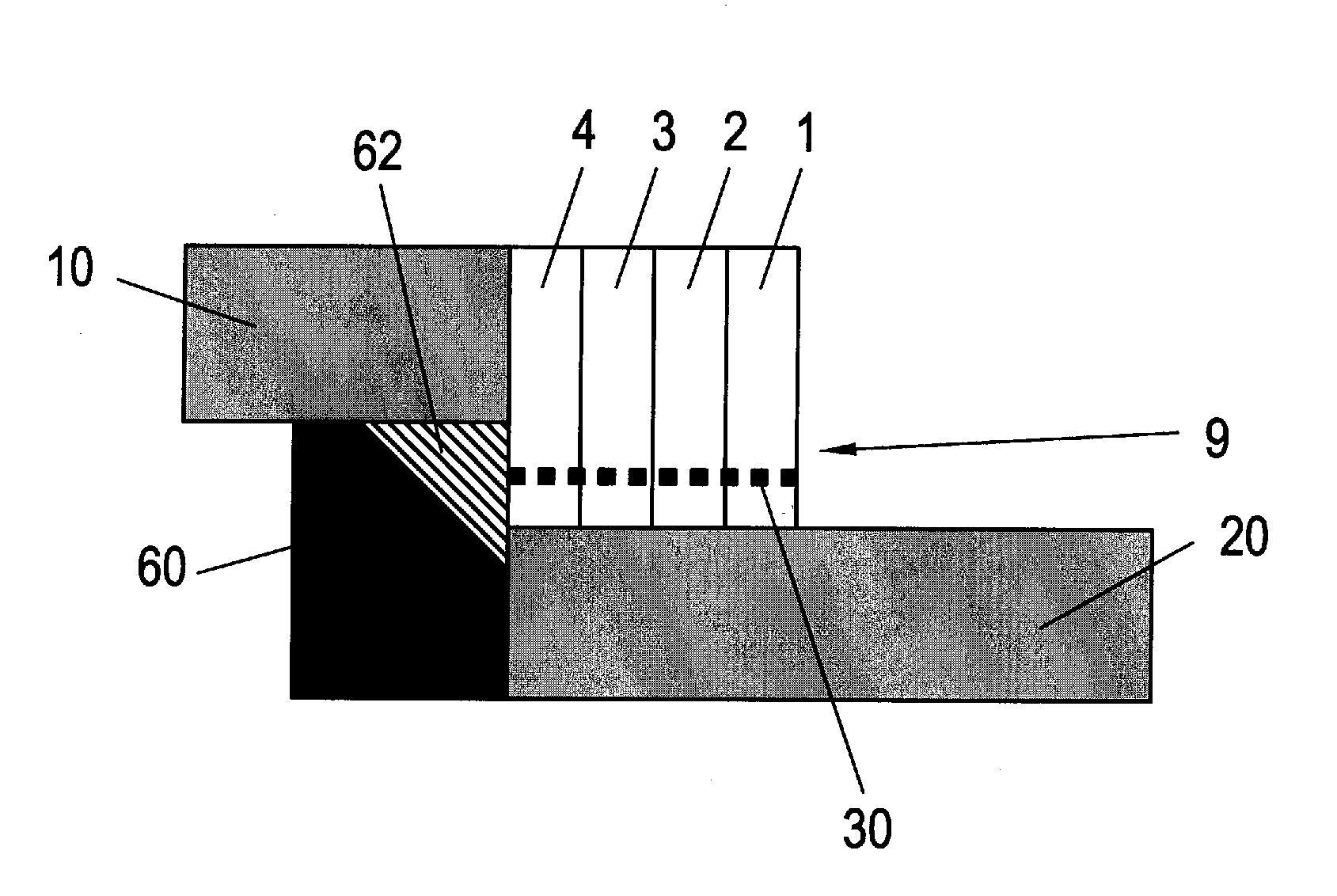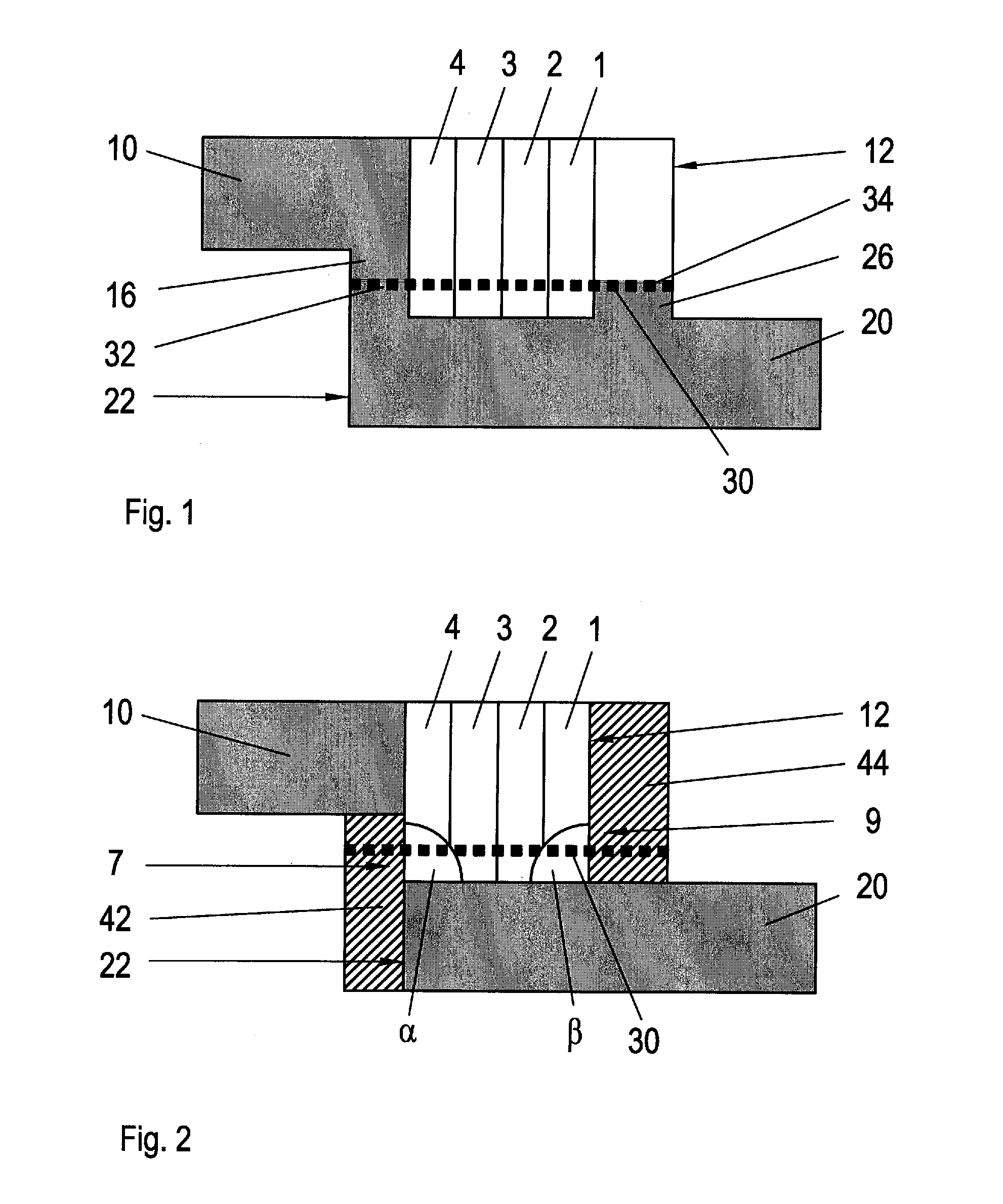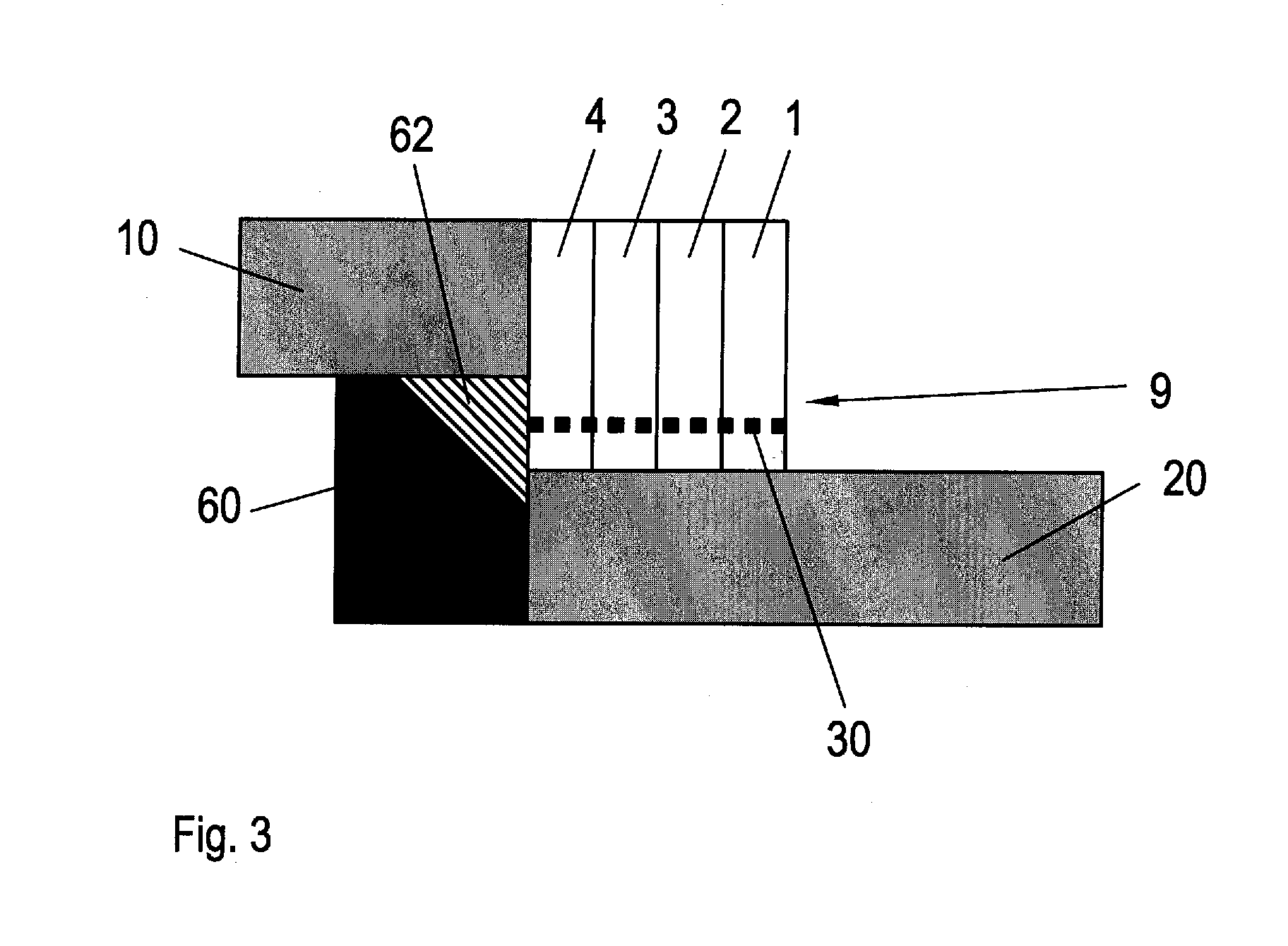Method for producing overlapping weld joints and overlapping weld joint
- Summary
- Abstract
- Description
- Claims
- Application Information
AI Technical Summary
Benefits of technology
Problems solved by technology
Method used
Image
Examples
first embodiment
[0025]FIG. 1 is a schematic sectional view of an overlapping weld joint of the invention in a first production stage. The sectional view has been chosen such that friction-stir welds 1, 2, 3, 4 extend into the plane of the paper along a first component 10 and a second component 20 to be joined thereto. The first component 10 has a base-shaped elevation 16 which is shown here on the lower side of the component 10. The second component 20 also has a base-shaped elevation 26 which is shown here on the upper side of the second component 20. The components 10, 20 overlap with the bases 16, 26 in an overlap region 30 which is shown here as a dotted line. In this view, four friction-stir welds 1, 2, 3, 4 are made next to one another in the second component 20 downwards from above through the first component 10. The friction-stir welds 1, 2, 3, 4 adjoin one another, overlapping each other at the sides and, in this view, extend substantially vertically to the plane of the paper. Provided in...
second embodiment
[0028]FIG. 3 is a schematic sectional view of an overlapping weld joint of the invention according to a Two overlapping components 10, 20 which are constructed analogously to the components in FIGS. 1 and 2 are welded together by four stir friction welds 1, 2, 3, 4. In the right-hand region of the illustration, the overlap region 30 has been removed up to the weld 1 by a subsequent machining operation corresponding to the embodiment of FIG. 2 in order to produce a gap-free join. The left-hand region of the illustration shows an auxiliary tool 60 which has a recess 62 on the upper right-hand side. The auxiliary tool is arranged such that the component 10 is clamped between the auxiliary tool 60 and the welding tool 50 and both components 10, 20 rest against the auxiliary tool 60. Material from both components 10, 20 is pressed into a recess 62 in the auxiliary tool 60 which adjoins both components 16, 26.
[0029]As a result, a gap-free welded joint 1 is produced according to this embo...
PUM
| Property | Measurement | Unit |
|---|---|---|
| Angle | aaaaa | aaaaa |
| Friction | aaaaa | aaaaa |
Abstract
Description
Claims
Application Information
 Login to View More
Login to View More - R&D
- Intellectual Property
- Life Sciences
- Materials
- Tech Scout
- Unparalleled Data Quality
- Higher Quality Content
- 60% Fewer Hallucinations
Browse by: Latest US Patents, China's latest patents, Technical Efficacy Thesaurus, Application Domain, Technology Topic, Popular Technical Reports.
© 2025 PatSnap. All rights reserved.Legal|Privacy policy|Modern Slavery Act Transparency Statement|Sitemap|About US| Contact US: help@patsnap.com



